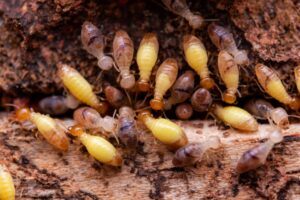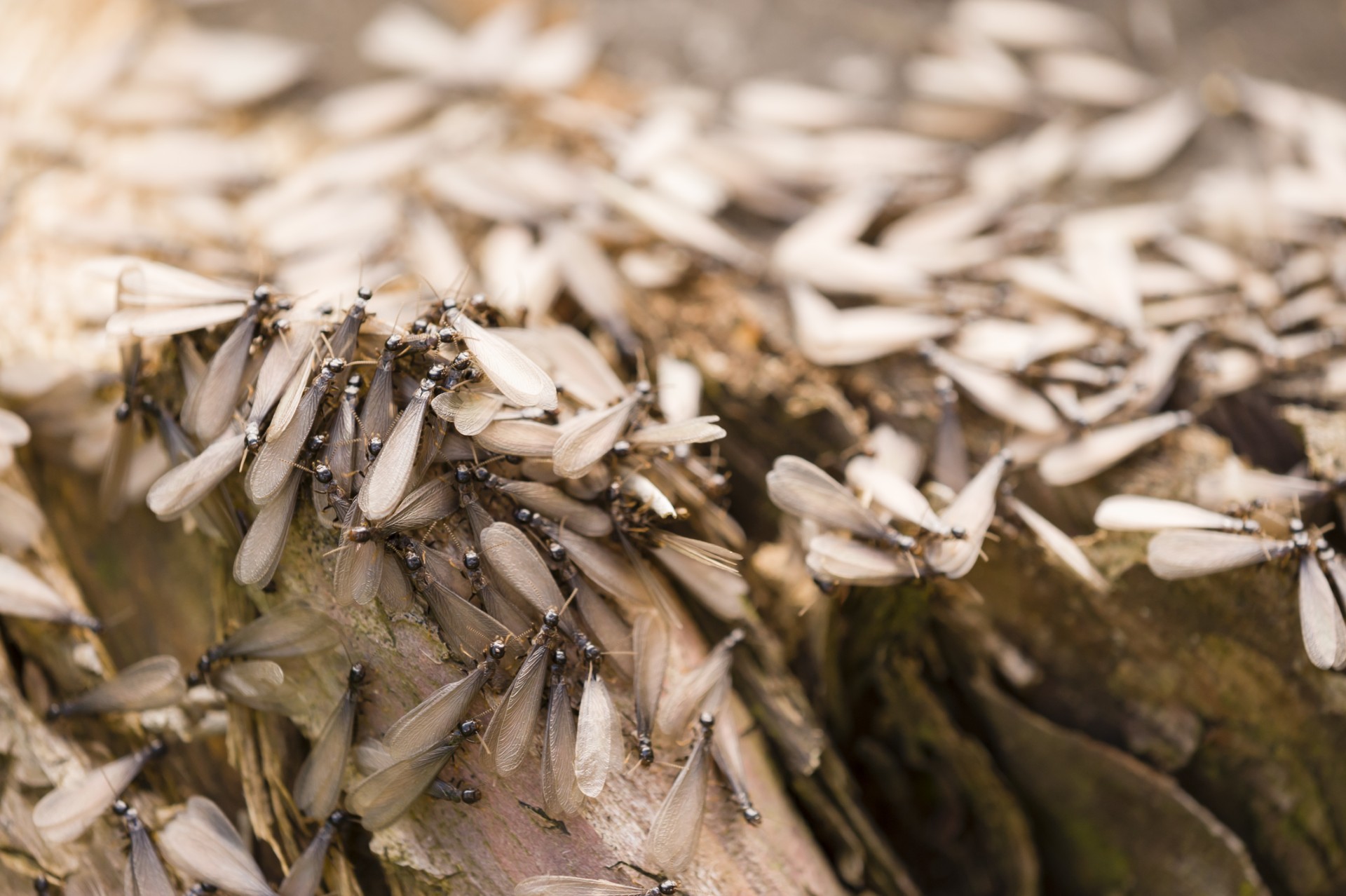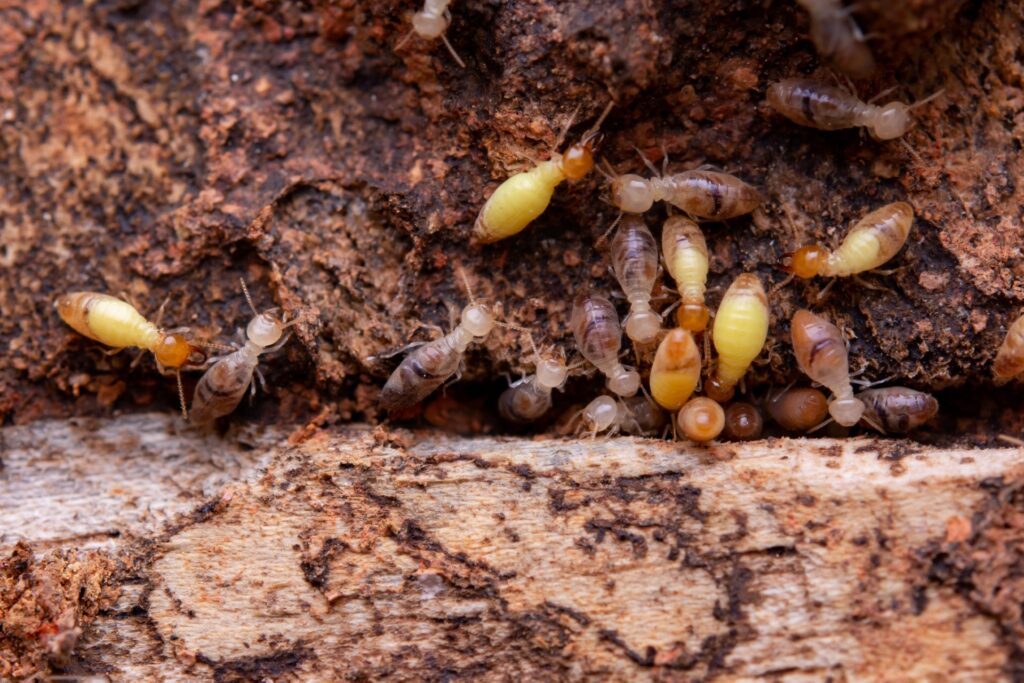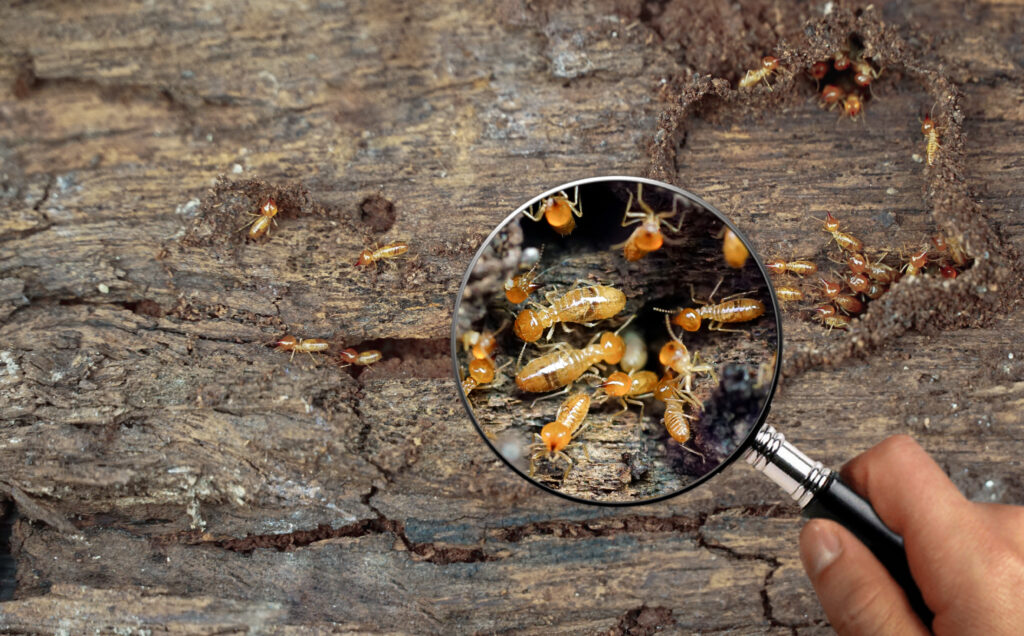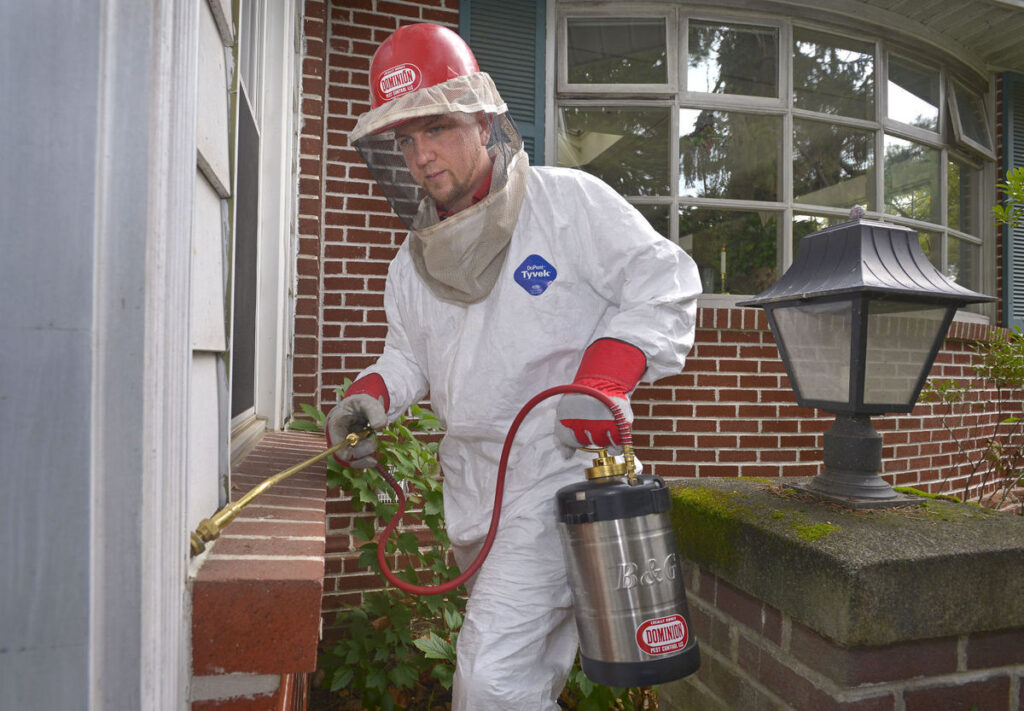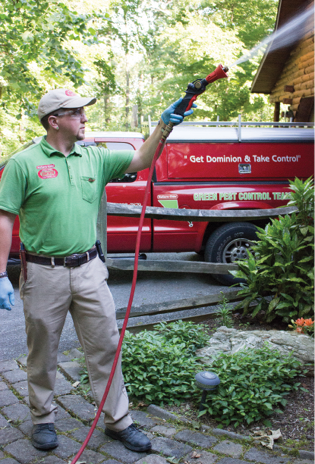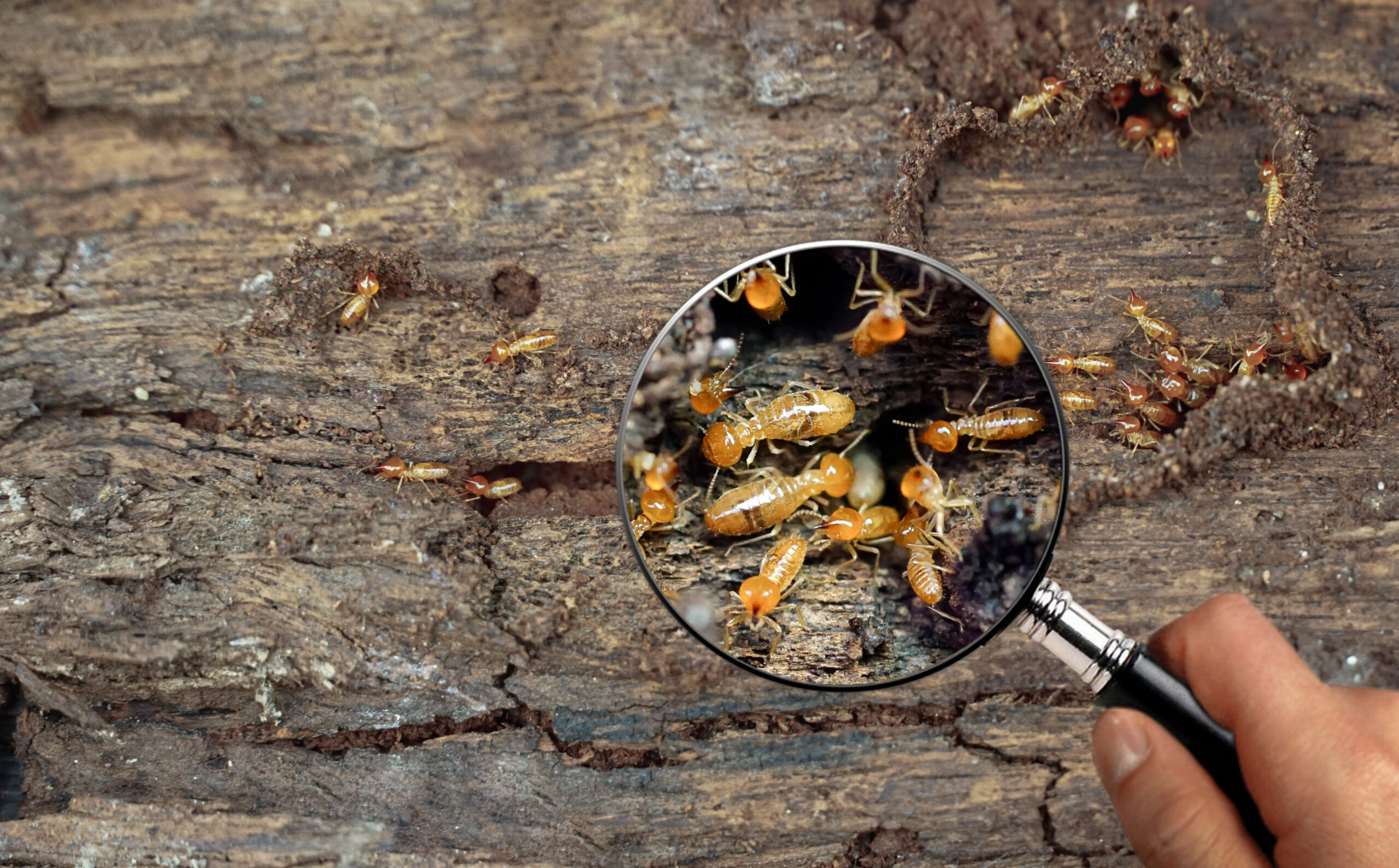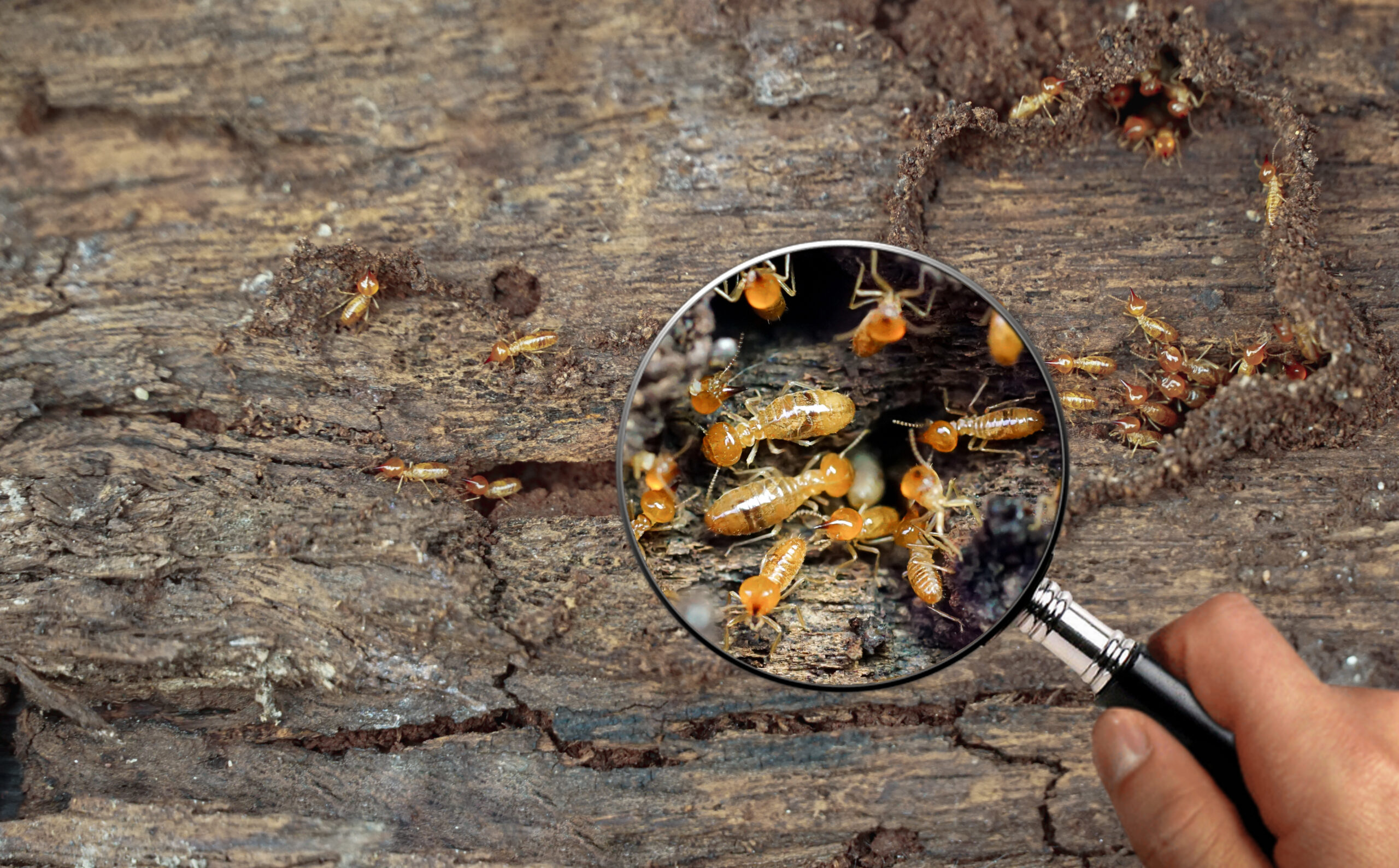How to Tell if You Have Termites/Wood Destroying Insects
Wondering how to tell if you have termites? Look for discarded wings, hollow-sounding wood, and mud tubes along walls or foundations, as well as tiny holes in wood, sawdust-like droppings, or buckling paint, which can all indicate termite activity.
A Dominion Pest Control technician can conduct a thorough termite inspection and can identify a termite infestation. If you have a termite problem in your home or business, we will create a termite treatment plan that results in efficient, effective termite extermination. We are experts on how to kill termites and our treatment will kill any termite colony on your property.
Termites/Wood Destroying Insects
What Are the Most Common Types of Termites in Pennsylvania?
There are thousands of termite species in the world. The most common termites in Pennsylvania are Eastern Subterranean Termites (Reticulitermes flavipes). These termites are responsible for most termite damage in the state.
While the Eastern Subterranean Termites are the most common found in Berks, Chester, Cumberland, Dauphin (Hershey), Lancaster, Lebanon, and York, there are a few other types of termites that can occasionally be found or pose a risk:
- Formosan Termites
- Not native to Pennsylvania but have been spotted in nearby states like Virginia and North Carolina.
- A more aggressive and highly destructive species of subterranean termite.
- Forms massive colonies and can cause structural damage faster than Eastern Subterranean Termites.
- Drywood Termites
- Rare in Pennsylvania but occasionally found in imported wooden furniture or structures.
- Unlike subterranean termites, they do not need soil and can infest dry, untreated wood.
- Found in attics, furniture, and wooden trim, often leaving behind frass (pellet-like droppings).
- Dark Southeastern Subterranean Termites
- Less common than Eastern Subterranean Termites but still found in eastern U.S. states.
- Behave similarly to Eastern Subterranean Termites, living underground and feeding on wood.
- Typically found in forested areas but can infest homes with high moisture levels.
- Light Southeastern Subterranean Termites
- More common in the southern Mid-Atlantic and southeastern U.S.
- Smaller colonies than Formosan or Eastern Subterranean Termites.
- More likely to infest dead trees and damp wood rather than structural wood in homes.
Termite colonies consist of different castes, each with a specific role. The queen termite is the largest and primary egg-layer, ensuring colony growth. Soldier termites protect the colony with their strong jaws, defending against threats.
Termite swarms can be mistaken for flying ant swarms. It is recommended to have Dominion determine whether the swarms on your property are termite swarmers or ants.
When Are Termites Most Active in Pennsylvania?
Understanding seasonal patterns is vital, as they signify peak times to monitor and take preventive actions against these destructive pests. Due to moderate temperatures and increased moisture levels, termite activity is especially prevalent in spring and fall.
Termite activity can vary across different regions of Pennsylvania:
- Southeastern PA (Philadelphia, Lower Merion, Delaware County, etc.) – Highest risk due to warmer temperatures, higher humidity, and older wooden structures. Swarming season typically begins in late March to early May.
- Central PA (Harrisburg, Lancaster, York, etc.) – Still at moderate risk, especially in wooded areas or homes with moisture issues. Swarms often occur from April to June, slightly later than in the southeast.
- Western & Northern PA (Pittsburgh, Erie, Scranton, etc.)- Lower termite activity but still present risk since termites prefer warmer climates. Swarms may occur later, from May to June, due to colder spring temperatures.
Regardless of region, subterranean termites remain active underground and within structures year-round, particularly in homes with leaky basements, crawl spaces, or poor drainage, as moisture attracts them. Termite inspection and termite treatment are essential for early detection and prevention, helping to protect your home from costly structural damage before an infestation worsens. Regular inspections and professional treatments can eliminate colonies and create barriers to prevent future termite activity.
Signs of Termite Infestation:
The difference between just a few termites and a termite infestation comes down to location, numbers, and evidence of damage. Our termite treatment experts will help you to quickly and accurately identify termite activity and develop the best treatment plan if you do have an infestation.
Signs of termites in your walls include discoloration, holes, and tunnels.
- Discarded Wings – Termites swarm when they are establishing a new colony, shedding their wings near windows, doors, and light sources. It’s part of their reproductive cycle. When a mature termite colony reaches capacity, it sends out winged reproductive termites (alates) to establish new colonies. Finding piles of tiny, translucent wings indoors is a strong indicator of an infestation.
- Hollow-Sounding Wood – Termites eat wood from the inside out, leaving behind a thin shell. Tap on walls, floors, or furniture and if it sounds hollow or breaks easily, termites may be tunneling inside.
- Mud Tubes – These pencil-sized tunnels, often found along foundation walls, crawl spaces, and basement beams, provide termites with moisture and protection as they travel between their colony and food source.
- Tiny Holes in Wood – Small, pin-sized holes in drywall, furniture, or wooden beams can indicate termite exit points. These holes are often surrounded by frass (termite droppings), signaling active infestation.
- “Sawdust” Droppings – Also known as frass, termite droppings resemble small, dark pellets or sawdust piles. Drywood termites push frass out of their tunnels, commonly found near baseboards, windowsills, and furniture crevices.
- Buckling Paint – When termites tunnel beneath painted surfaces, moisture buildup causes bubbling, warping, or peeling paint. This is often mistaken for water damage but can signal hidden termite activity within walls or wooden trim work.
How To Get Rid of Termites
Dominion Pest Control may use the following termite treatment options:
- Liquid Termiticides (Soil Treatment) –With soil injection, our exterminators dig, drill, and pump termiticide into the affected area. This creates a complete barrier in the soil, preventing travel to and from the wooden structure where these termites reside. Our carefully selected termiticides ensure that every termite that encounters the treated area will ingest or carry the termiticide back to its nesting site. This includes the reproductives and most importantly, the queen herself — leading to the eventual collapse of the entire colony.
- Baiting Systems – Stations placed around a property that contain bait laced with a slow-acting insecticide, which termites take back to their colony. When foraging termites begin feeding on the Interceptors, they start to build tunnels in the earth to reach these stations. After activity is detected, our expert team supplements the sensor stations with bait stations. The bait contains an active ingredient that is even more appealing and virtually irresistible to termites. When termites consume the bait and return to their colony, they inadvertently share the bait with the rest of the colony, leading to its elimination.
- Placement of Interceptors – It begins with the careful placement of inground sensor stations around the perimeter of your structure. The stations are filled with non-toxic termite food called Interceptors. At times, we may also install above ground station.
- Foaming – By creating a termiticide foam, we can cover a large surface area and penetrate deep into the termites’ food source. This foam expands upon contact, filling gaps, voids, and hard-to-reach spaces, ultimately ensuring that no termite is left behind.
- Wood Treatments – Borate-based solutions applied to exposed wood surfaces to prevent termites from feeding and tunneling.
The final method for how to get rid of termites depends on the severity of the infestation, location, and type of termites present.
Common Options We Do Not Recommend
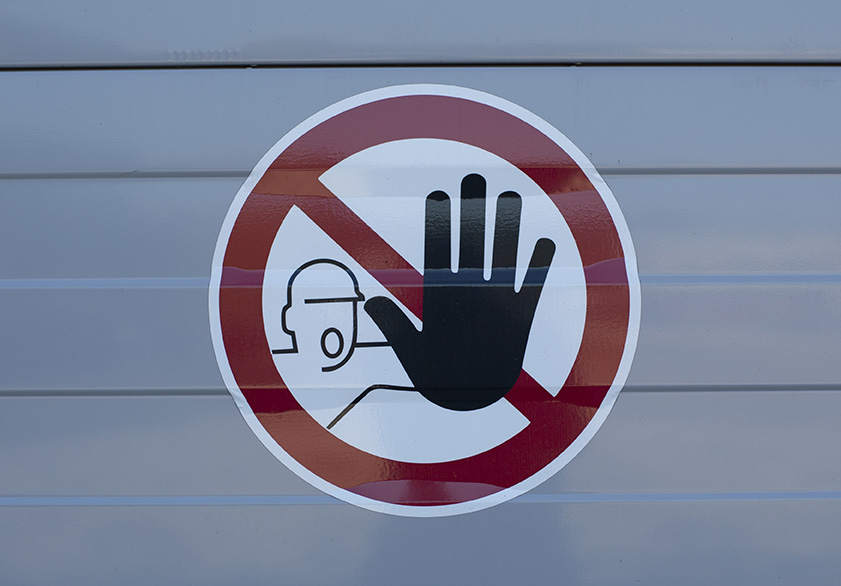
- Fumigation (Tent Treatment) – A full-structure gas treatment used for severe infestations, penetrating all areas of a building. Not always practical for small or localized infestations, as it requires extensive preparation and temporary relocation.
- Heat Treatment – Raising the temperature inside a structure to lethal levels for termites, effectively eliminating them without chemicals. Can be ineffective if heat does not evenly penetrate thick wood or hidden termite galleries.
- Electro-Gun or Microwave Treatments – Specialized tools that use electricity or microwaves to kill termites in localized areas. Limited to surface-level applications and may not reach deeply embedded termite colonies.
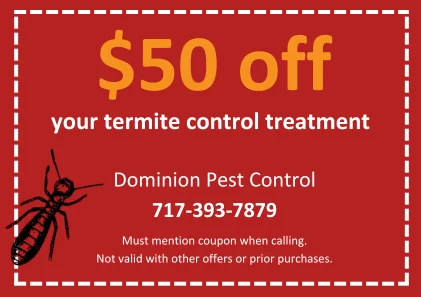
What’s My Next Step for Termite Control?
Choose peace of mind! If you suspect you have a termite infestation, use our form to start living pest-free. Dominion Pest Control will get in touch ASAP.
Pricing & Warranty: Dominion has flexible programs with flexible pricing. We offer termite monitoring programs, and termite soil treatments with a renewable warranty that can be extended up to 20 years.
How to Prepare for Your Exterminator: Essential Tips for a Successful Treatment
Preparation for your termite extermination will depend on which treatment option is needed to control the pests in your home or building. Your technician can go over any preparation needs.
Prevention: Best Next Steps to Avoid Re-Infestation of Termites
After your home has been treated for termites by Dominion Pest Control, it’s essential to take the following steps to ensure the effectiveness of the treatment and prevent future infestations:
- Follow Post-Treatment Guidelines: Adhere to any specific instructions provided by Dominion Pest Control, such as when it’s safe to re-enter treated areas or any necessary ventilation procedures.
- Monitor for Activity: Keep an eye out for signs of termite activity, like mud tubes, discarded wings, or wood damage. While treatments are designed to eliminate existing colonies, vigilance helps in early detection of any resurgence.
- Maintain Cleanliness: Remove any wood debris, paper, or cellulose materials from around your home’s foundation, as these can attract termites.
- Address Moisture Issues: Fix leaky pipes, ensure proper drainage, and reduce humidity in crawl spaces and basements, as termites thrive in moist environments.
- Schedule Regular Inspections: Arrange for periodic inspections with Dominion Pest Control to ensure your property remains termite-free and to catch any potential issues early.
By diligently following these steps, you can enhance the longevity of the termite control treatment and protect your home from future termite problems.
FAQs
What are drywall signs of termites?
Termite damage to drywall can be less obvious than termite damage on wood, but common signs are similar in that tapping on drywall will produce a hollow sound. Also the drywall may show signs of bubbling and peeling paint. Faint zigzags or maze-like patterns may show. Lastly, termites may leave behind frass near infested areas.
What are some early-stage signs of termites in a ceiling?
Look for small pinholes or signs of moisture buildup where termite activity caused paint to bubble or blister. Look for faint maze-like patterns, which may indicate termite tunneling. As with other surfaces, look for signs of termite frass.
Can termites bite humans or pets?
While termites do have strong jaws for chewing through wood and other materials, they do not bite humans or pets.
